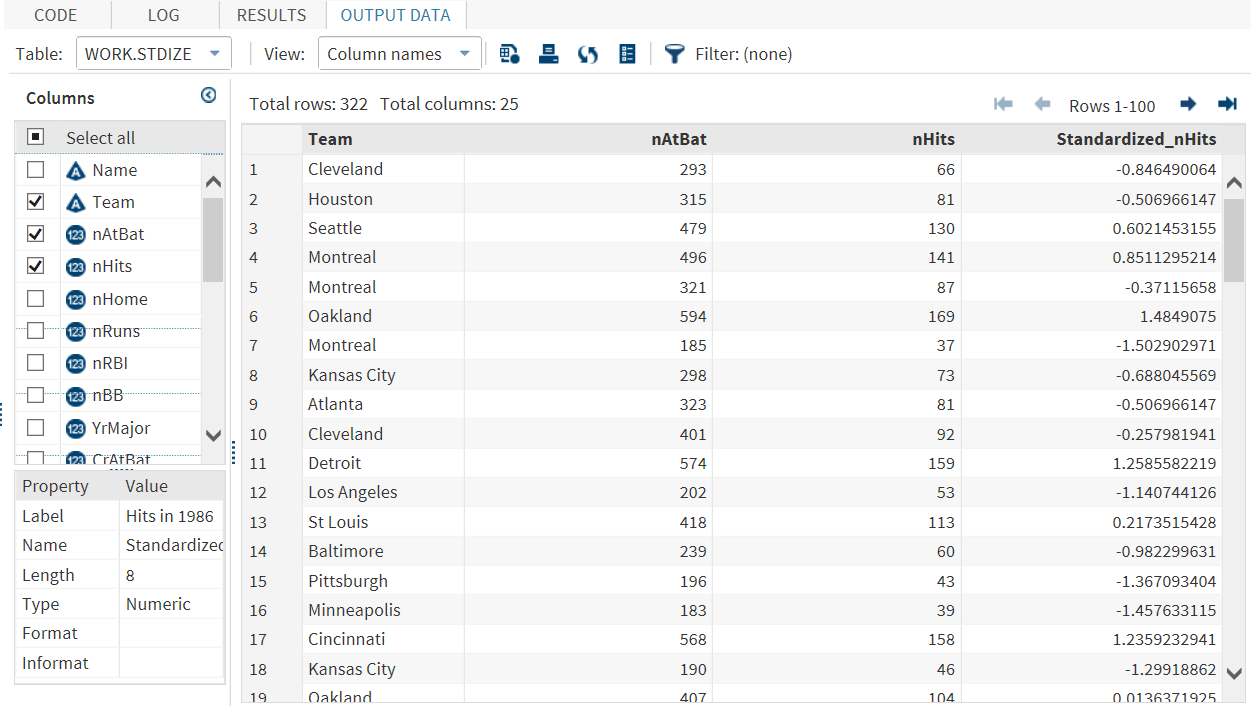Standardize Data Task
About the Standardize Data Task
The Standardize Data task enables you to center or standardize one or more numeric variables by using a variety of methods. The standardized variables are saved in an output data set.
Assigning Data to Roles
To run the Standardize
Data task, you must assign a column to the Variables to
standardize role.
|
Role
|
Description
|
|---|---|
|
Roles
|
|
|
Variables
to standardize
|
lists the numeric variables to be standardized.
|
|
Additional Roles
|
|
|
Frequency
count
|
is the variable that contains the frequency of occurrence for other values in the
observation. The task treats the data set as if each observation appeared n times,
where n is the value of the
Frequency count variable for the observation.
|
|
Weight
|
specifies a numeric variable in the input data set with values that are used to weight each observation. These values can be nonintegers.
An observation is used in the analysis only if
the value of the Weight variable is greater than zero.
|
|
Group analysis
by
|
creates separate analyses of observations in the groups that are defined by the BY variables.
|
Setting the Options
|
Option Name
|
Description
|
|---|---|
|
Methods
|
|
|
Center data
only
|
specifies that you want to use either the mean or median standardization method.
|
|
Standardization
method
|
specifies that you want
to use one of these standardization methods:
|
|
Treatment of Missing
Values
|
|
|
Missing
values method
|
specifies whether to omit observations with a missing value or to replace the missing value. You can replace the missing value with one of these
options:
|
|
Statistics
|
|
|
Display
location and scale measures
|
displays the location
and scale measures in the results. These measures give you an idea
of what the standardization process accomplished.
|
Setting the Output Options
By default, the Standardize Data task creates an output data set that includes both
the original and standardized variables. You can add a prefix to the variable names
to differentiate between the original
and standardized variables. By default, the task adds the Standardize_ prefix to the standardized variable.
The Show
output data option specifies whether to include the output data in the results that appear on the Results tab. You can include all or a subset of the output data. The task always creates the output data set that appears on the
Output Data tab. This data set is also saved to the specified location..
Copyright © SAS Institute Inc. All rights reserved.

